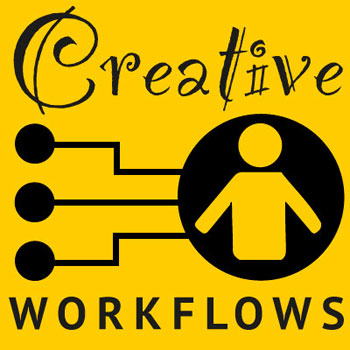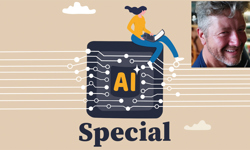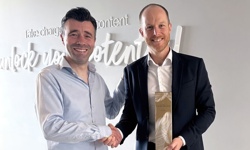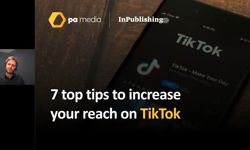
It is said that change is the only constant, but how many of us structure our publishing business with that in mind? Do you test your exit strategy from a solution or service as part of the implementation? Can you say with certainty those valuable assets can be successfully transferred to an alternative environment? Have you tested the API does what it is supposed to do?
Once we have identified the need for change, we often rush to implement without remembering that this is just one change in an endless line of subsequent changes yet to come. We don’t have a crystal ball, but we can build with change in mind.
How do we know change is required?
Ask these questions of all departments:
- Why do you work the way you do? If the answer is, I don’t know, or it was how I was shown, then there is a good chance that role needs to be reviewed. All too often, people are shown how to perform tasks by people who have found their own way of completing tasks. These may not be the most efficient or up-to-date ways of working.
- Is there more than one person to sign off work? People can inadvertently become the bottle-neck of smooth flowing workflow. If an editor / art director are the only people signing off on finished work and they are not available, then a backlog will inevitably build. Delegation is the answer and if there is no trusted delegation then ask, why not?
- Are workflow steps transparent to all? Most important is knowing what you have to do and which tasks take priority, but second to that is for others to know. Can you, at a glance, see if someone is overburdened whilst another has spare capacity? A transparent workflow lets everybody know what stage all projects are at, removing the need for constant progress meetings.
- Do you know where all assets can be found? McKinsey and others have calculated that 19% of people’s time at work is spent trying to find things. This can be as high as 30% in creative roles. Anything that reduces the amount of time finding assets, files, projects etc. has an immediate positive effect on production and efficiency. Imagine gaining a day per worker per week to understand why good asset management is important.
- Do you know yours and other people’s timescales? Without a system to monitor time taken on projects, it is extremely difficult to predict how long work should take. If all tasks are automatically monitored, then, eventually, an accurate average can be seen to evolve. This is less about monitoring individuals and more about understanding the consequences of taking on more or less work. Though it can also help to highlight training needs if individuals are consistently underperforming.
- Are there mundane or repetitive tasks that could be automated? The way to win hearts and minds on any workflow project is to be able to remove those tasks that are a pain to an individual. Frequently, the new versions of software or services help to alleviate the mundane and repetitive, but unless someone takes time to identify these innovations and implement them, simple improvements are overlooked.
- Are there tasks taking a disproportionate amount of time to complete? Some tasks just take a lot of time to complete and whereas in the past, that was that, with the growth of Artificial Intelligence (AI), even the most complex tasks are now being de-skilled and often automated. Take, for example, the tagging of digital images or the removal of complex backgrounds in photos.
- Is the work / flat-plan updated live and available to all? Being able to see at a glance the status of a project or a publication will help to ease the last-minute panics so common in publishing. A simple editorial calendar or flat-plan with a traffic light system showing the status of all elements goes a long way towards managing a smooth workflow and meeting deadlines.
- Do we have a devil's advocate on the planning team? It is important that projects have advocates for change, but often left out is the need for an opposing point of view, a person who will challenge you to quantify why change is needed and what the benefits are. This person is not against the project, they are there to strengthen the argument for change.
Building with change in mind
Each aspect of a publishing workflow should be scrutinised on a regular basis. Software and service companies compete with each other, forcing innovative and feature rich upgrades, all geared to make your publishing life easier. Do not let lack of time or resources prevent you from understanding and implementing these new advantages.
What is often dismissed by an individual as an insignificant saving of a minute or two, when applied to a whole workforce, can be a very important saving. Make sure someone has a global perspective on innovative change, or hire consultants to perform that task on your behalf.
Whatever solution you implement, there will come a time when a better, more appropriate system is required. It is therefore important to know you can take the complexity of your current way of working and transfer it into the new one. The excitement of implementing a new solution will often drive out the idea that you will want to remove it in the future. This is a mistake. Build knowing you will change in the future. Take each aspect of your work environment and ask from the very start, how do we move this way of working to another. For example, all asset management solutions will tell you that images and all their associated metadata can be exported from their system into another. Do not assume this to be true, test it then test it again with volume. Apply this methodology to all areas at point of implementation, and the dread of change will lose some of its sting.
Key points to remember:
- Look for flexible and adaptable solutions or services.
- Eliminate as many single points of failure or bottle-necks as possible.
- Automate or remove processes wherever possible.
- Don’t commit to long-term contracts without escape clauses.
- Make sure you have a devil's advocate in your planning team.
- Build with a tested escape strategy in mind.
- Make sure you understand the advantages new software or services offer.
- Review all your workflows regularly.
Final thought
The introduction of new AI services in many creative areas is growing and will accelerate change. These solutions will de-skill once complex tasks and reduce the need for people to do mundane and repetitive tasks.
More change is coming – are you ready?
Download Sean’s infographic: ‘A guide to workflow review’

About us
Sean Briggs is a specialist in magazine workflows with over thirty years of practical experience in building, modifying and replacing editorial systems. Sean established Creative Workflows Ltd to help publishers improve the way they work. Clients include Hearst, Burda, Immediate Media and Slimming world.
Email: sean@creativeworkflows.co.uk
Web: www.creativeworkflows.co.uk
Tel: 07725 759 700
Twitter: @CWorkflows
LinkedIn: www.linkedin.com/in/sean-briggs-779503/
Facebook: www.facebook.com/CreativeWorkflows.co.uk










